“Why would I need to look for solar panels that can withstand high temperatures? Surely I only need to focus on panels with high-efficiency levels.”
Yes, efficiency is critical, but remember, a solar panel performs at its best under total sun exposure. This means its surface will face consistently high temperatures.
Why is this relevant? Well, the primary active material making up a solar panel is silicon — the material responsible for giving a panel its dark-blue color.
The darker an object, the more light wavelengths it’ll absorb and convert into heat. It stands to reason that a solar panel must be able to withstand high heat.
So, the question remains: what are the best solar panels for high temperatures?
In this article, we list 15 of the best solar panels for high temperatures. Additionally, we discuss how high temperature affects your PV system’s power output and more.
Table of Contents
What are the 15 best solar panels for high temperatures?
Here is a list of the 15 best solar panels for high temperatures:
Note to our readers: the following panels range from 30W to 320W. Panels for camping (foldable) and rooftops (RV, house) have also been included.
- Renogy 30W solar panel
- SOLPERK 30W solar panel
- SUNER POWER 50W solar panel
- SOLPERK 50W solar panel
- Renogy 50W solar panel
- RICH SOLAR 60W solar panel
- PAXCESS 60W solar panel
- RICH SOLAR 100W solar panel
- WEIZE 100W solar panel
- Renogy 100W solar panel
- Togo Power 120W solar panel
- TWELSEAVAN 120W solar panel
- Renogy 200W solar panel
- Renogy 320W solar panel
- Renogy 450W solar panel
How does temperature affect solar panel output?
It might be counter-intuitive to think that high temperatures decrease solar panel efficiency. After all, solar panels are at their best when fully exposed to sunlight.
But, they can become as hot as 80°C; like any other electronic device, solar panels can suffer from high temperatures.
Let’s see why.
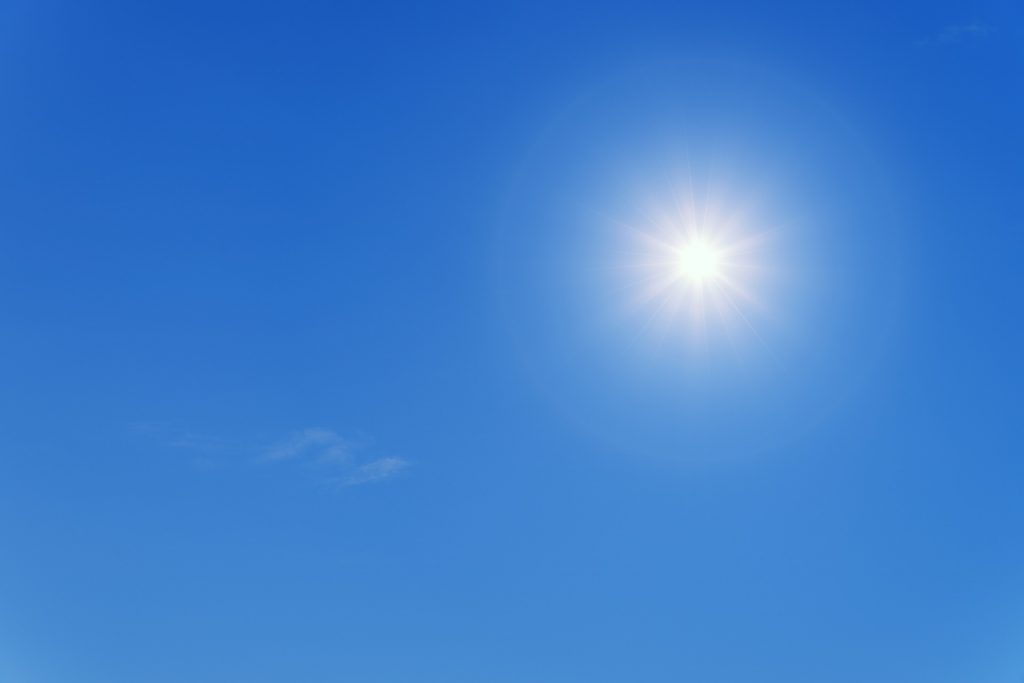
Solar panels are affected by high temperatures due to the limitations of their primary active material: silicon.
Silicon is a semiconductor similar to the one you’ll find in the micro-ship of your computer, phone, and other electronic devices.
A semiconductor combines the properties of a conductor (metal) and a non-conductor (insulant). Its properties are affected by temperature.
Silicon behaves like an insulant at low temperatures and a conductor (metal) at higher temperatures.
In this instance, silicon can produce electrons (electricity) in the presence of sunlight (photons), thanks to the photoelectric effect.
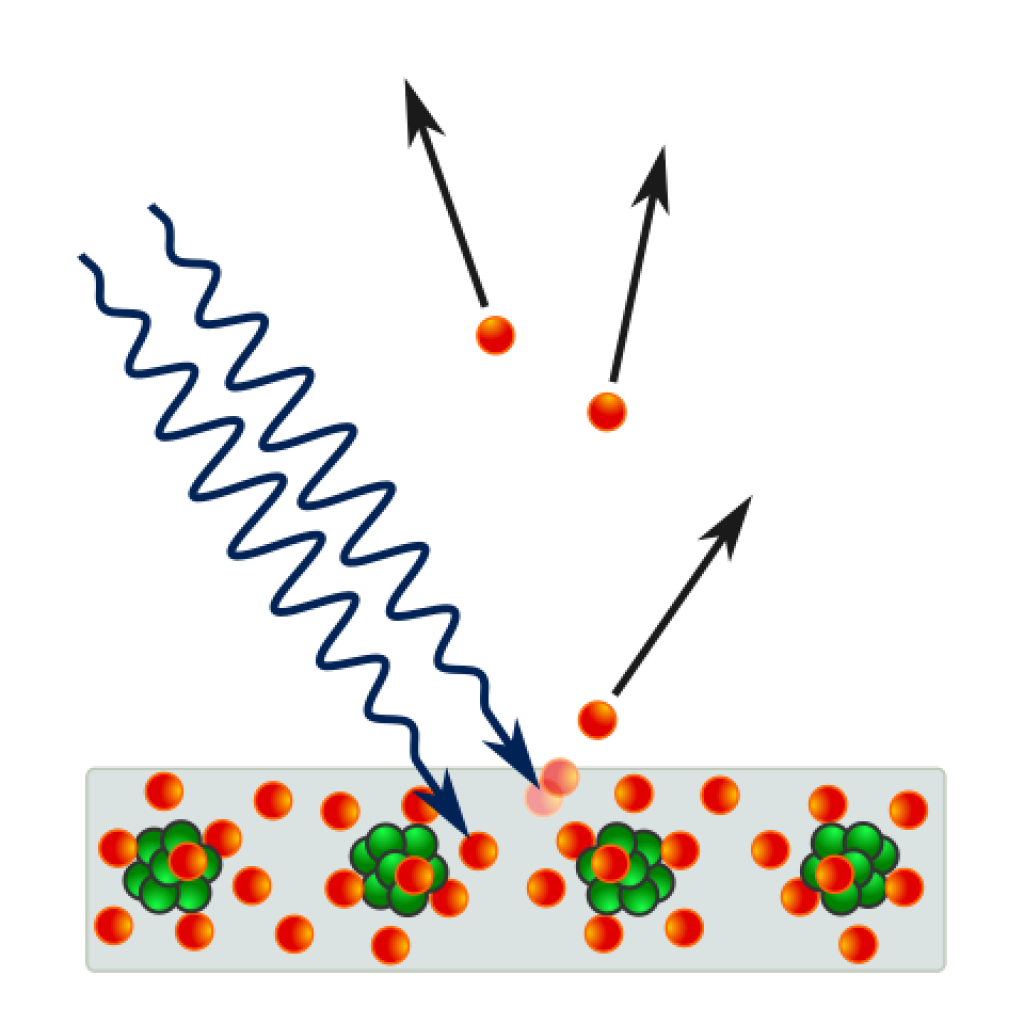
Lower temperatures mean silicon atoms are in a low excitation state — electrons inside the material don’t flow as easily, and the material becomes insulant.
Conversely, higher temperatures excite silicon atoms, turning the material into more of a conductor (metal). This will allow the electrons to flow with greater ease into the panel. In the end, more electrons will be produced (more current) but at a lower voltage.
For solar panels, the relevant figure is the power output in watts, which is obtained by multiplying the output current (amps) by the voltage of the panel (V):
P(Watt) = I (Amps) * V
The increase in current won’t be enough to balance the decrease in voltage, reducing your solar panels’ overall power output.
What is the temperature coefficient of a solar panel?
Since manufacturers know that high temperatures lower their panels’ power output, they want to quantify this effect. Thankfully, this is easy to measure and predict.
Manufacturers use a temperature coefficient that reflects the loss in power for every degree. You can find a panel’s temperature coefficient in the specifications section of its manual.
This is a linear coefficient whose value varies between -0.3%/°C and -0.5%/°C depending on the type of solar panel.
A -0.5%/°C temperature coefficient means that for every °C increase, your solar panel will lose 0.5% of its total rated maximum power.
Your solar panel’s power output decreases when its surface temperature exceeds the nominal operating cell temperature (NOCT), which is 113°F (45°C).
Let’s take a closer look at the specifications of a RENOGY 200W solar panel.
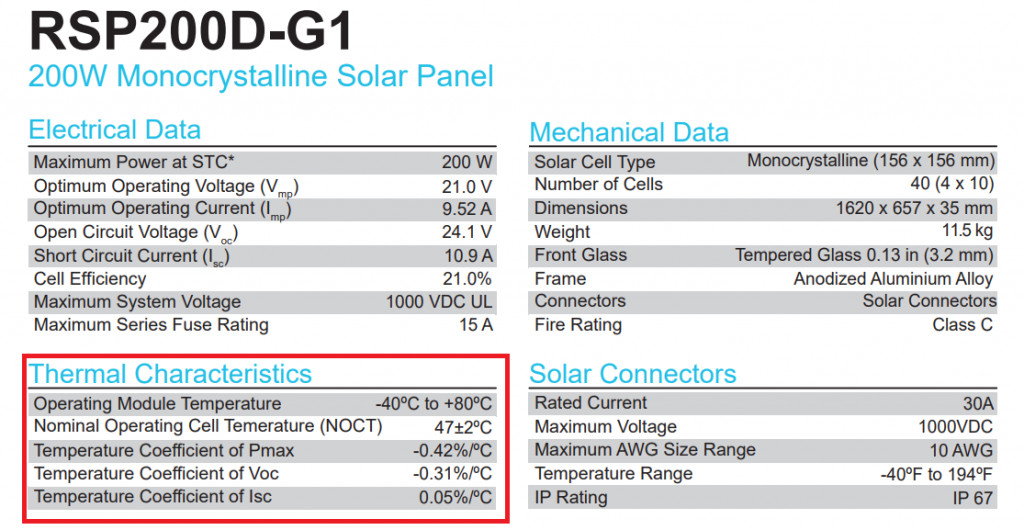
As you can see, the pane’s thermal characteristics are present in the above image.
These figures indicate that electric current increases with temperature (0.05%/°C) and voltage decreases (-0.31%/°C).
The temperature coefficient for this panel is -0.42%/°C.
If the panel reaches 80°C (176°F) — its maximum temperature — the difference with the nominal temperature is 35°C (95°F).
80°C(max)-45°C(optimal)=35°C
Therefore the decrease in power output due to temperature is:
35*0.42= 14.7%
In conclusion, this 200W panel will only produce 171W at max.
Note to our readers: Every solar panel has a different temperature coefficient. Find this information by looking at its thermal characteristics.
Which solar panel is best for high temperatures?
Different solar panels come with varying temperature coefficients. What’s more, they can be made up of different types of silicon:
- Monocrystalline
- Polycrystalline
- Thin-film
Polycrystalline panels typically have temperature coefficients of -0.5%/°C, whereas monocrystalline panels have temperature coefficients between -0.3%/°C and -0.45%/°C.
Under high temperatures, monocrystalline panels produce, on average, 20% more power than their polycrystalline counterparts. In short, the best panels for high temperatures in 2022 are monocrystalline.
Why does monocrystalline perform better than polycrystalline under high temperatures?
A solar panel’s performance under high temperatures is due to the arrangement of atoms in its silicon. Remember, silicon is the active material of your panel.
Monocrystalline and polycrystalline solar panels have the same active material, silicon. However, they differ by their level of internal crystal arrangement.
Monocrystalline panels are made from a single silicon crystal. The arrangement of atoms in these panels is almost perfect compared to the more messy crystal arrangement in polycrystalline silicon. This enables an easier flow of electrons through the material, reducing losses at high temperatures.
What is the optimal temperature for a solar panel?
Under laboratory testing conditions, the outside temperature is set at 77°F (25°C). In these conditions, the solar panel’s front window temperature reaches around 113°F (45°C). This is the nominal operating cell temperature (NOCT). At this optimum, your solar panel will produce its maximum power.
However, in real-life conditions, the outside temperature varies significantly. For instance, in California, it can reach an average of 86°F (30°C) during the hottest month of the year.
Consequently, when exposed to full sunlight, the panel’s surface can reach up to 176°F (80°C).
This will reduce the performance of your panel by up to 15% compared to the optimal temperature.
How do you keep solar panels cool?
By now, you know that high temperatures reduce solar panel efficiency. So it stands to reason that cooling your panels is necessary to minimize losses.
There are two ways to keep your panels cool:
- Passive cooling
- Active cooling
Passive cooling
Passive cooling is a simple yet effective way of reducing your panel surface temperature. It takes advantage of the natural airflow below the solar panel.
For rooftop solar panels (house or RV), allow at least 15 cm of space between the surface of your roof and your solar panel.
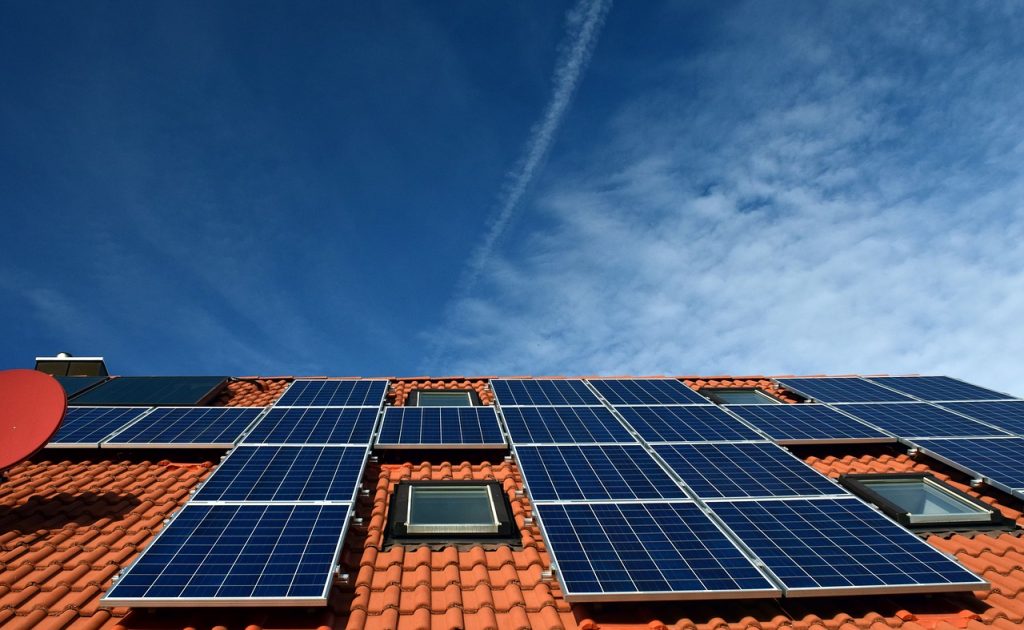
When it comes to flexible solar panels, never glue them directly on your vehicle’s roof. They become incredibly hot because the temperature diffuses through the roof’s metal surface into the solar panel.
If you’re using foldable solar panels on a camping trip, make sure you have a stand, so they aren’t in direct contact with the ground.
With passive cooling, you can lower the temperature of your panels by 5 to 10 degrees.
Active cooling
You’ve seen that high temperatures lower solar panel power output by 15%. This translates into a great deal of energy and financial loss for larger domestic and industrial installations.
Active cooling is the most effective way to reduce a solar panel’s surface temperature. This form of temperature reduction uses water cooling, which we can divide as follows:
- Front water cooling
- Backwater cooling or hybridization
Front Water Cooling
Front water cooling is the cheapest method, though it’s a very effective active cooling technique. This method requires you to install a drip system on top of your solar panel.
Once complete, water drops flow over the panel’s surface, collect at the bottom and circulate back to the top via a pump.

Experimental results indicate that this method is an effective way to cool and clean the panel’s surface, resulting in a significant power gain of up to 10% yearly.
With front water cooling, you can reduce a panel’s temperature by more than 15 degrees in a few minutes.
Unfortunately, this technique is limited to large-scale installation. It requires equipment like a water pump that uses energy, a water tank, and pipes.
The system is open; therefore, water will evaporate, and you’ll have to refill the tank from time to time.
If you want to install this cooling method, we advise you to make the necessary calculations before setting up your system. You’ll need to determine the appropriate water quantity and pump power.
Tips for foldable solar panels for camping
Foldable solar panels are usually set on the ground, making them easily accessible.
A simple way of cooling your foldable solar panels is to spray them with water from time to time. You’ll soon notice an increase in performance.
Backwater cooling or hybridization
Backwater cooling is based on heat exchange.
Water is circulated in small pipes right below the surface of the solar panel. The heat from the panel is transferred to the water and could be used directly in the house as warm water or connected to a heat pump to increase its efficiency.
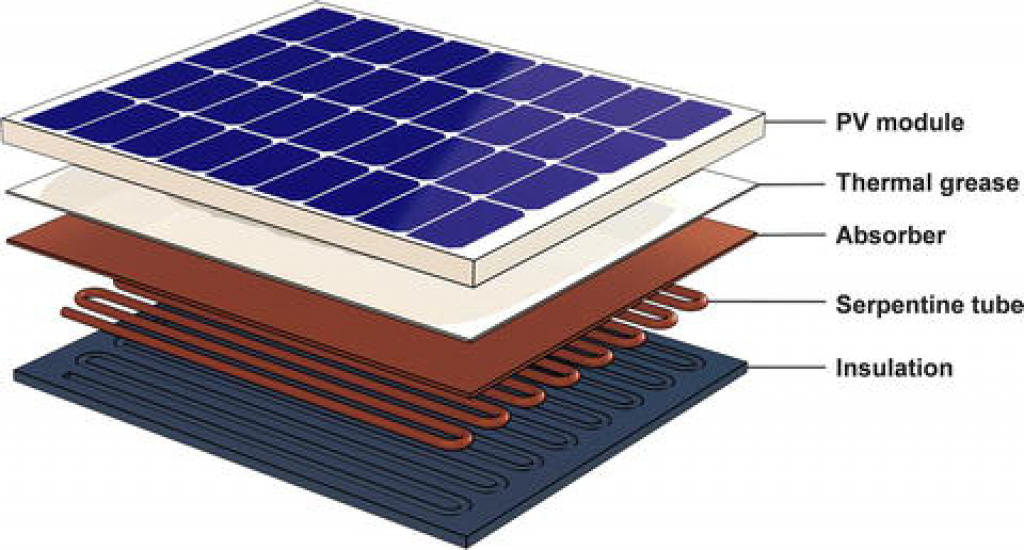
This type of system is named PVT for Photovoltaic Thermal, it is a hybrid system combining the production of electricity from a solar panel, and warm water from the heat exchanger.
Backwater cooling is more expensive to set up than front water cooling, however, it is as efficient to maximize your solar panel output and in addition, you will benefit from the heat of the water coolant for your household use.
Final thoughts
Temperature is affecting the power output of your solar panel.
When the sun is at its zenith, you can lose up to 15% of your power output due to high temperatures.
Choose monocrystalline solar panels, they offer up to 20% more power output at high temperatures compared to polycrystalline solar panels.
In addition, never mount your panels directly on a surface – allow for 15 cm to provide natural air cooling.
Think about hybrid Thermal and PV solar panels, they maximize the power output and provide warm water to your house. No waste of solar power, no waste of heat!

